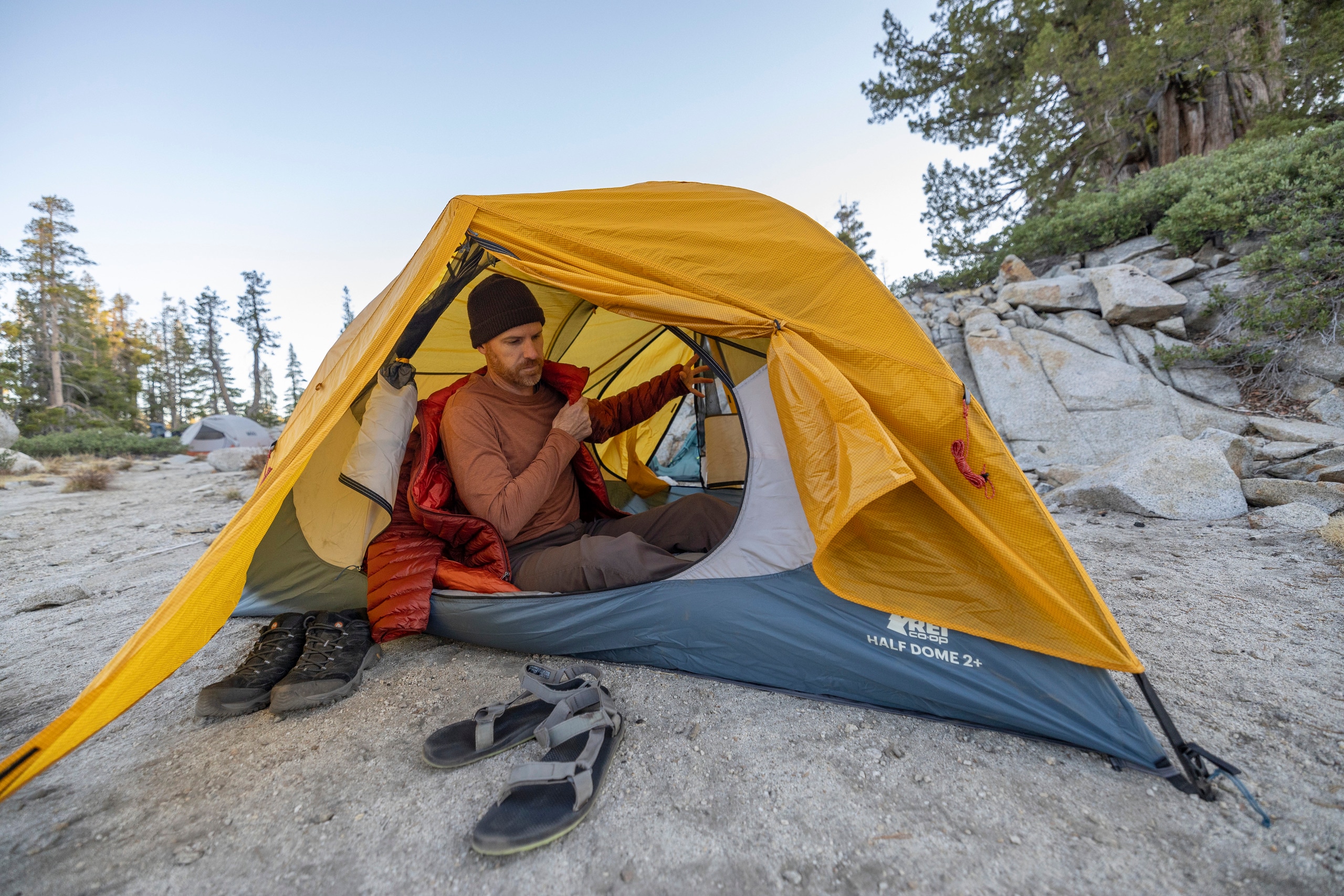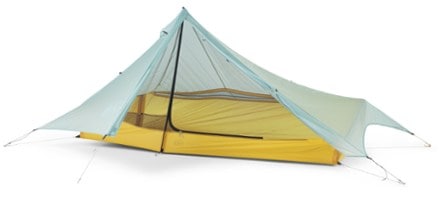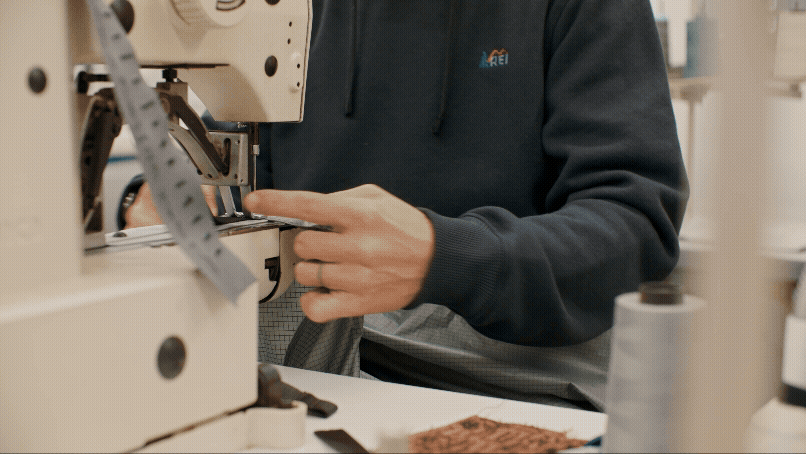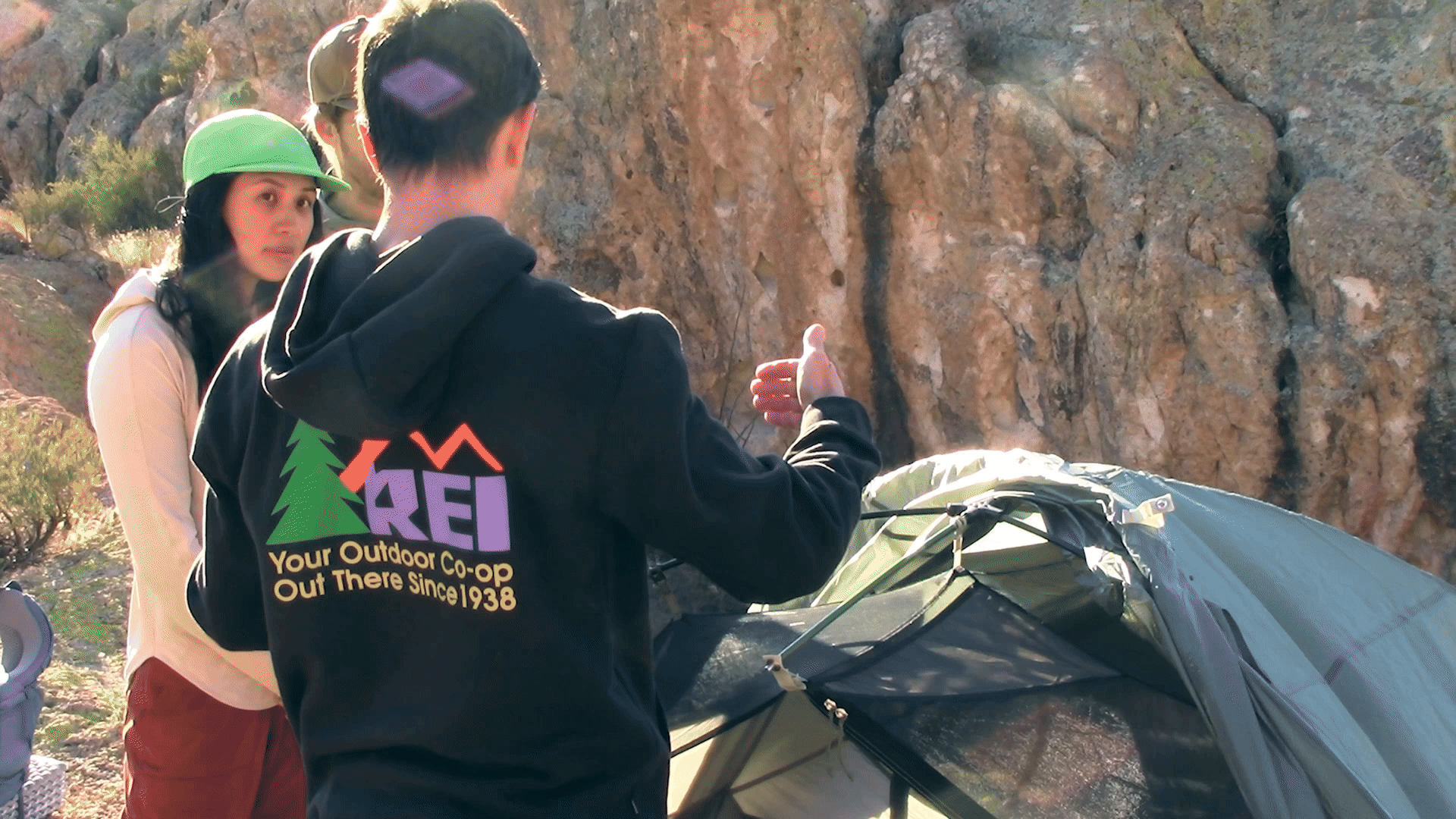How to Choose a Backpacking Tent

Bikepackers, light packers and peak baggers, meet our lightest 1-person yet: the REI Co-op Flash Air 1 tent. Pitch it with its own poles—or use your trekking pole for a 1 lb. 11.2 oz. setup.




$29
10% Reward
on this and every eligible full-price item*
+
$30
Bonus Card
valid for 60 days after joining*
=
$59
Value
Keep shopping
Imported.
View the REI Co-op Flash Product LineView all REI Co-op Backpacking Tents| Best Use | Backpacking |
|---|---|
| Seasons | 3-season |
| Sleeping Capacity | 1-person |
| Minimum Trail Weight | 1 lb. 12 oz. (or 1 lb. 11.2 oz. without main pole) |
| Packaged Weight | 2 lbs. 4.6 oz. |
| Packed Size | 6 x 16 inches |
| Floor Dimensions | 88 x 35/27 (L x W head/foot) inches |
| Floor Area | 18.94 square feet |
| Vestibule Area | 8.4 square feet |
| Peak Height | 42 inches |
| Number of Doors | 1 door |
| Number of Poles | 2 |
| Pole Material | DAC NFL aluminum |
| Canopy Fabric | Nylon mesh |
| Floor Fabric | Ripstop nylon |
| Footprint Included | No |
| Ultralight | Yes |
| Design Type | Nonfreestanding |
| Sustainability | From a Climate Label Certified brand |
From feedback to field testing, all of our gear is dialed-in by REI Co-op members. Their adventures informed every stitch and detail—making for better, longer-lasting gear.


Adding a review will require a valid email for verification
light, easy to set up, keeps the rain out, and is long enough and has a high enough foot box it works even though I am 6'3" (several tents I found are long enough but the top slopes so much my toes make contact when on my back). Just an FYI, its a single wall tent so when its damp, raining, humid you really dont want to be rubbing up on the inside of the tent or you will get condensation (it does not leak its condensation, some of the reviews are clearly confusing the two) I have had it for about 3 years now, only sleep in it maybe 20-30 times as I also use a hammockt... small enough I can carry both the hammock and this tent on my bikes if its not to crazy of a route. the tent packs VERY small, MUCH smaller than the provided stuff sack, just stow the poles in another spot (in the bike pic the tent, lines, and stakes are in one fork bag and the poles are in the frame bag)
This is such a well designed tent. It is roomy enough for one person and gear with just enough room to sit up. This was tested in Southern Indiana woods during January. Either due to low humidity during my testing or the nice ventilation, condensation was minimal. The bathtub bottom will provide nice splash protection during heavy rain…a feature I have missed in my 2p ultralight single wall tent. The seam in the middle of the tent bottom is a little disappointing for such a small tent, but all the seams are solid. The waterproof tape on the seams is of high quality. The “short poles” are a great innovation and give a nice shape to the tent. I also like that the long pole is included. However, I found the trekking pole setup to feel more stable. I will leave the long pole at home for the next backpacking trip, but I would be glad to have it for bike packing. The deeper pocket is very nice but the shallow pocket seems to be saggy and things fell out of that one. As with most freestanding tents, solid stake placement is key to the setup. These stakes are very nice, but must be setup in a specific direction for the loops to catch. The built in finger loops to help remove the stakes is clutch and will probably help the tent loops last much longer since I otherwise use those. Also, the guy lines are ridiculously reflective and makes the tent look pretty cool under LED headlamp light. While there is a small loop for hanging a light at the apex of the tent, it is nearly too small to be usable. When setup with the trekking pole I found the loop could barely be reached since the pole handle takes up more space than the tent pole. I did wake up one morning to a heavy snow and found my vestibule had collapsed. Again, stake placement is key and thankfully I was able to restake the vestibule from my sleeping bag. Additionally, once the tent got wet, the walls sagged pretty significantly. While annoying, this is par for the course for single wall silnylon tents and easily fixed with the cinching guylines. I only wish the four corner anchors for the tent had the adjustable guylines since it can be difficult to find perfect stake placements with less adjustability in rocky or rooted ground. All in all, this is an amazing ultralight solo tent that has a few drawbacks intrinsic to ultralight tents. I would definitely be happy to carry this tent on a future thruhike.
This tent has an integrated body and fly. So the top part of the rainfly is single wall, then the body of the tent is separate from the rain fly so that you get one gear vestibule. One side of the tent (head end) is slightly wider than the other end (foot end). The door is on the side, under the rain fly. If there is condensation on the single wall tent, it will not drip down to the floor, because of the mesh on the sides. It is not a freestanding tent, which means it needs to be staked out to hold it's structure. It required 6 stakes for me in total - one at each corner, one to hold the vestibule, and one to hold the opposite side. It comes with 3 poles - two short 6 inch poles for two corners, then a longer trekking pole sized pole for the middle of the vestibule (can be replaced with a trekking pole to save weight). Some ways in which I think this tent could be improved are: * It was difficult to get the corners without mini-poles to be fully raised and taut, as seen in the picture. * It would be nice to have a few more loops on the outside of the rainfly to tie to trees etc. to raise the tent in case the ground is not good for stakes. Specifically it did not have loops right above the corners of the tent, which I thought would be nice.There are some loops however, and it comes with at least 3 extra cords to use these loops. * I thought the footprint was smaller than I expected, there was at least 2 inches inset on all sides. I thought only about 1 inch is necessary to prevent water building up on it during rainfall. Overall I think this is a solid option for the lightweight backpacker on trails such as the PCT with good flat campsites which can be staked. Note: I received this product for free in exchange for an honest review.
This is a lightweight minimalist’s dream for when the weather picks up and you need a place to keep the elements off you. It’s also versatile enough that you don't feel too cramped in a backyard using it like I did my first time. It sets up easily and take down is just as rapid. It has a good tub to keep you dry on we ground and good built-in rainfly. I love that if you forget the tent pole that you can use a hiking pole. Can’t wait to see how it performs in a storm, I usually have relied on bivvy bags overnight but i get so claustrophobic and this is a gem. In an emergency you might be able to squeeze two people in it but you’d be right on top of each other. There is some room under the rain fly to protect gear. Top notch REI. Love your stuff
I was excited to try out the new version of the Flash Air 1 since it looked like REI had attempted to address many of the complaints the previous version received. Still, I wasn't sure what to expect as there weren't any reviews online at the time of purchase, and the description and pictures on REI's website didn't detail the differences between version 1 and version 2. According to the listed specifications, the packaged weight is 1lb 10.5oz, and the trail weight is 1lb 6oz with the provided poles and 1lb 4oz without. However, once I received the tent, I noticed the stuff sack lists a minimum trail weight of 1lb 12oz. I weighed the tent out of curiosity and came up with 2lb 4.4oz for everything. After weighing all the components individually and doing some research (thank you ChrisGoesOutdoors on YT), I found the following differences. *Tent body - 26oz new vs. 18.4oz old *Poles stakes - 0.4oz each, 4oz total new vs. 2oz total old (new version comes with 10, old came with 5) *Total weight - 36.4oz new vs. 26.8oz old (9.6 oz difference total, 7.6oz in tent body, and 2oz in extra tent stakes) This difference is quite substantial for the target audience of an ultralightweight tent. It's unclear whether it was intentional or accidental, but it's misleading.
I have used this tent when backpacking in Texas in both humid and dry environments. Set-up is fairly quick and easy. While I've only used the provided poles, I'm sure using trekking poles would work nicely, too, if weight is an issue. I have had some condensation on the tent walls in the morning, but nothing out of the ordinary for this type of tent. Making sure to vent the tent helps, too. I'm a fairly large woman, and I had plenty of room inside the tent. I could even sit up comfortably. I would recommend this tent if you'd like a lightweight, easy-to-use backpacking tent.
I have a solid amount of experience setting tents up but let me tell you this one was a doozy to figure out! It took me and two small children the better part of an hour to finally figure it out. I could’ve been lacking brain power, we set it up after a very long day of climbing but still. I’d recommend bringing extra stakes as well. Once it was up it was up and secured (mainly with large rocks) it held up well against the wind storm that came through so that’s a bonus. Sleeps one comfortably and you could potentially get two in there if spooning was the vibe. I’m 5’10 and there was probably an extra foot or so of space as well. All in all I don’t know if the Jerry rigging required makes this purchase worth it but like I’m also not gonna go out and buy a new tent :/ Solid 3/5
I’m doing the foothills trail in SC now and this tent leaks. We’ve been having a lot of rain and I’m getting a lot of water in ☹️. I’ll have to leave the trail because it will keep raining and this tent does not work in this weather. I came from PR to do this trail and I regret buying this tent
Used for 1 overnight, was trying to decide between air 1 or 2. I had difficulty getting adequate tension from the guy lines and subsequently got wet overnight. I also had very little head room, was only able to prop myself up on on my elbow. Set up was a tad more difficult than I expected. Lovd the small size and low weight, but have decided to sacrifice that for a bit more room on my upcoming trips where I expect to wait out rain storms each day.
When on a coastal backpacking trip and took this tent. I love how lightweight it is! The setup was a little funky the first time but the second and third time was a breeze. Talking about breeze - it held up great through strong coastal winds in the middle of the night! Unfortunately I did return it because the condensation build up inside the tent was a lot. The lightweight part of it makes me reconsider purchasing it again though. We shall see.